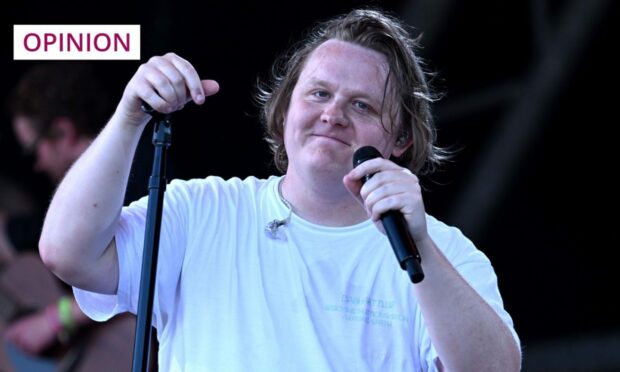A recent Netflix documentary about the Scottish pop star Lewis Capaldi made for frequently uncomfortable viewing.
The film – How I’m Feeling Now – follows the 26-year-old, raised in Whitburn, West Lothian, as he tries to create the follow-up to his 2019 debut album, Divinely Uninspired to a Hellish Extent.
What we see is a young man under intolerable pressure, much of which he applies to himself. Consumed with anxiety, he tortures himself. He suffers imposter syndrome. His stress exacerbates his recently diagnosed Tourette’s syndrome, which causes him to involuntarily twitch and jerk his shoulder.
Though Tourette’s is a neurological disorder rather than a mental health issue, the worse his mental health, the more pronounced the jerking. It clearly causes him pain.
Having watched the film, I was not entirely surprised by the way Capaldi’s performance panned out at last weekend’s Glastonbury Festival.

He struggled with tics throughout his hour-long set and, as it neared its conclusion, he lost his voice. He looked absolutely lost. Had you been by his side, the instinct would have been to hug him.
When Capaldi couldn’t get the words out, the crowd stepped in, singing his hit Someone You Loved. It was a profoundly moving moment which visibly lifted Capaldi.
The media coverage has – from what I’ve seen – been thoroughly supportive. This is a great indicator of progress when it comes to mental health issues.
Not so very long ago, Capaldi’s actions might have been declared a “meltdown”. Fortunately, although it may not always seem so, we live in more sensitive times.
Being open about mental health issues is the best course of action
Although it was clearly distressing to Capaldi when his voice started to pack up, he may – I hope – look back on what followed with some satisfaction.
A great outpouring of empathy from the audience at Glastonbury confirmed that the days when mental health problems sat, elephant-shaped and ignored, in our front rooms have been consigned to history.
That a young man has been willing to discuss and display the mental health issues which trouble him is hugely positive. That he has the global profile of Lewis Capaldi is a bonus.
Suicide is not only the leading cause of death among those aged five to 24, it’s a particular issue among young men, who are three times as likely as women to take their own lives.
The last thing Capaldi needs right now is the pressure of being made the figurehead of any movement, but he can be a symbol of progress and a reminder that being open about mental health issues is the best course of action.
Shortly after his festival performance, Capaldi announced that he’d be taking a break from performance in order to concentrate on his mental health. This seems a wise decision and I hope he gets the help he needs.
We’ve made progress, but we need action
The reaction of Capaldi’s audience was moving, it united warring tribes across social media. Here was a good thing, here were people at their best.
But while agreeing that we’ve made progress as a society on how we treat and discuss mental illness might make us feel terribly progressive and righteous, it doesn’t bring much by way of practical support to those in need of it.
Once we’re done congratulating ourselves about how sensitive we are, the fact remains that young Scots requesting support from child and adolescent mental health services face a minimum wait of five months before they’ll see a therapist. Government ministers may endorse more open discussion of mental health issues, but they are yet to ensure that the necessary support is properly funded.
Right now, less than a tenth of the NHS Budget is used to fund mental health services. If you think this adequate, then you must also think a five month wait for teenagers requiring professional help perfectly fine. I suspect many of you do not.
The truth remains that the government is not properly funding mental health support at a time when it was never more needed
Some politicians now talk openly about their own mental health problems. They sign pledges and tremble through speeches full of unbearable woe and trite epiphanies. They say all the right things. They are less impressive when it comes to delivering.
But the truth remains that the government is not properly funding mental health support at a time when it was never more needed.
A little more than 80% of Scots began receiving mental health treatment within 18 weeks of referral during the quarter ending in December 2022. This is 10 points short of the Scottish Government’s own target.
If this situation is to improve, we need politicians to start spending.
Euan McColm is a regular columnist for various Scottish newspapers
